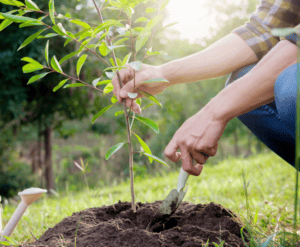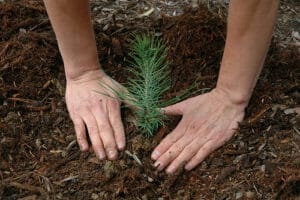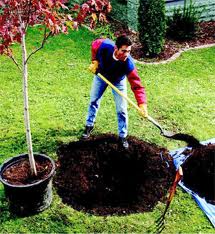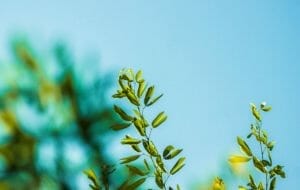 Planting a tree is always an exciting new undertaking, but it takes plenty of work to ensure your trees long-term health and success. A long and happy life for you tree means proper planning starting with the time of year you plant your tree to care of your tree after planting. Here’s exactly how to plant your tree like a pro.
Planting a tree is always an exciting new undertaking, but it takes plenty of work to ensure your trees long-term health and success. A long and happy life for you tree means proper planning starting with the time of year you plant your tree to care of your tree after planting. Here’s exactly how to plant your tree like a pro.
What Time of Year Should I Plant My New Tree According To A Leading Arborist?
There is some debate on the ideal time for planting that new tree. However, contrary to popular belief that spring is the ideal time, you should really look to do it in the fall.
New trees have the best chance of survival when exposed to moderate temperatures and a good amount of rain. Our falls are cool and definitely come with plenty of rain, which creates the ideal weather for planting a new tree.
The condition of the soil is better as well, with the soil being warm enough and not quite as damp as springtime, after it’s endured many months of rainfall.
 A new tree needs to have time to develop a system of roots and acclimate itself before the intense weather of winter unfolds, so planting it as early as possible in fall is important. Because the root system will already be grown and in place, the warmer months will be easier on the tree. Some trees have a harder time making it through winter than others, so while fall is the ideal time for tree planting, some precautions still must be taken to make sure your tree stays healthy. We highly encourage you to contact our team of arborists with any questions you may have.
A new tree needs to have time to develop a system of roots and acclimate itself before the intense weather of winter unfolds, so planting it as early as possible in fall is important. Because the root system will already be grown and in place, the warmer months will be easier on the tree. Some trees have a harder time making it through winter than others, so while fall is the ideal time for tree planting, some precautions still must be taken to make sure your tree stays healthy. We highly encourage you to contact our team of arborists with any questions you may have.
Evergreens are particularly at risk during winter due to their leaves losing more water than other types of trees. With all types of trees, especially evergreens, consistent watering is of the utmost importance. Water your new trees with an inch of water each week, even after the leaves start falling off the trees. You want to continue watering during breaks in rainy weather to give the tree as good of a chance as possible of getting through the winter.
How to Choose the Best Trees For The Pacific Northwest
 Different trees thrive in different climates, if you are looking to plant a tree you need to consider which ones do best for our climate, amount of sun exposure, rainfall, and soil composition. Here in the Pacific Northwest, trees that will thrive the best are those that prefer cool, wet winters and moderate temperatures in the summer. This translates as conifers or evergreen trees. That’s not to say that deciduous trees won’t grow well, like the Oregon White Oak tree or Oregon Crabapple tree, but our climate is perfect for those big beautiful Pacific Northwest evergreens you see all around you. Douglas Firs, Western Hemlock, Oregon Pine, and Ponderosa Pine are just a few of the species to consider when looking for the best evergreen trees to plant in the Pacific Northwest.
Different trees thrive in different climates, if you are looking to plant a tree you need to consider which ones do best for our climate, amount of sun exposure, rainfall, and soil composition. Here in the Pacific Northwest, trees that will thrive the best are those that prefer cool, wet winters and moderate temperatures in the summer. This translates as conifers or evergreen trees. That’s not to say that deciduous trees won’t grow well, like the Oregon White Oak tree or Oregon Crabapple tree, but our climate is perfect for those big beautiful Pacific Northwest evergreens you see all around you. Douglas Firs, Western Hemlock, Oregon Pine, and Ponderosa Pine are just a few of the species to consider when looking for the best evergreen trees to plant in the Pacific Northwest.
Choosing the right tree for the right area of your yard can also be a difficult and time-consuming part of planting a tree. You need to do your research. In some cases, it may not be best to handle this step yourself. You need to consider: Light availability, mature size, growth rate, drainage, disease concerns, maintenance costs, clean up, city restrictions, and of course aesthetics. You should try to avoid planting anything other than ornamental trees within 10’ of your home.
Probe your local nursery staff for information about the tree you are considering. It also might be a good idea to have an arborist out for a recommendation on what tree might work well in your space. An arborist will know the most about the characteristics of different trees and their maintenance and disease concerns specific to your location. Most arborists provide this service for a small fee ($50-$100). Spending a little money on this now could really save you in the long run if you plan to stay in the house.
Purchasing a Healthy Specimen
When purchasing a tree it’s important to choose a healthy tree with good structure. It amazes me sometimes how many trees that should be in the burn pile end up for sale at retail nurseries. Here is a list of things to look for:
- Unless your tree is a multi-stemmed your tree should have a single trunk that leads straightthe middle of the tree to the top of the tree. It is important that this single trunk be intact all the way to the tip top of the tree.
- Your tree should not have any scars or damage to the trunk.
- Your tree should not have any indication of bugs or other infestations.
- Look at the roots of the tree. The larger roots should not swirl around the container. This is a sign the tree has been in that size pot too long. Also they should appear healthy will no signs of rot. This will require you get your hands dirty.
- Stand back take a look at the tree from far away. Ask yourself: Is the tree appealing in its shape? Are the branches evenly spaced? Is the shape consistent with the variety? This is a lot easier to do when the leaves are off the tree, but work with your situation the best you can.
- Choose a larger tree. If you are looking at a stock of trees and there are several that all seem like they are in good condition choose the large one. Large trees handle the stress of transplant better and root in more quickly. They are also less prone to damage and vandalism. We recommend a 2” caliper tree in most situations.
It is a good idea even if you are having your tree delivered to go to the nursery and pick it out by hand as it most likely will be a permanent part of your landscaping.
Planting Your New Tree
Now for the fun part: you’ve found the perfect tree, you just need to get it into the ground. Take the tree out of the container and score the sides of the root wad cutting trough the outer layer of roots 1-2” with the side of your shovel. Do the same thing to the bottom of the root wad in an X pattern. Dig your fingers into the root wade and loosen the outer layer of roots.
Measure the height from the bottom of the root wad to the top of the soil. Dig a whole this deep and twice as wide as the container the tree came in. You do not want to put more than a dusting of new soil over the top of the root wad. Any deeper can cause rot at the base of the tree. A wide hole helps the roots get established in less compacted soil.
If your soil is clay you will want to make the hole narrower to stop water from collecting at the bottom of the hole (a couple of inches wider than the container). Also if the tree is in a high traffic area you may want to make the hole narrower so the tree can stand up on its own without being staked.
Staking creates a long list of problems for developing trees. A tree should be able to hold itself up. While a wider hole is preferred you will need to do what is needed for your specific circumstances.
Put the tree in the hole lightly compact the soil around the tree. Do Not amend the soil. If you are adding soil, mix your own soil with regular top soil. Amended soil can cause the roots to want to stay in the nutrient rich area instead of rooting out and stabilizing the tree. Also if you had a tree removed do not plant the tree in the stump grindings. You will have to remove the stumps grinds and replace that soil with top soil.
I personally like to create a little raised ring around the tree at the outer edges of the disturbed area. What this does is stop water from running over the ground and away from the roots and traps it so it leaches into the soil and down to the roots. Remove all tags, tape, bracing, and any other stuff that is not a natural part of the tree. Ta da! Congratulations, you’ve planted a beautiful new tree. To find out exactly how to care for that tree, check out our blog post here.
Tree Planting Experts in Portland, Oregon
 Planting a tree is an exciting project to take on. Knowing proper tree care will make the planting process go smoother. Whether you have experience planting trees or have none at all, a licensed professional tree planting service is the best way to make sure you’ve chosen the right tree and to help ensure your new sapling’s health and survival for many years to come, and at Urban Forest Pro, we have the expert team of leading arborists to help you do just that.
Planting a tree is an exciting project to take on. Knowing proper tree care will make the planting process go smoother. Whether you have experience planting trees or have none at all, a licensed professional tree planting service is the best way to make sure you’ve chosen the right tree and to help ensure your new sapling’s health and survival for many years to come, and at Urban Forest Pro, we have the expert team of leading arborists to help you do just that.
What Our Clients Say About Us
“They were on time, friendly, did a great job, and even did a little bit more than we originally had quoted. Would definitely recommend!”
Caleb I.
Rating 5/5 ⭐⭐⭐⭐⭐
See our 4.8 rating and read more of our 196 reviews on Google!